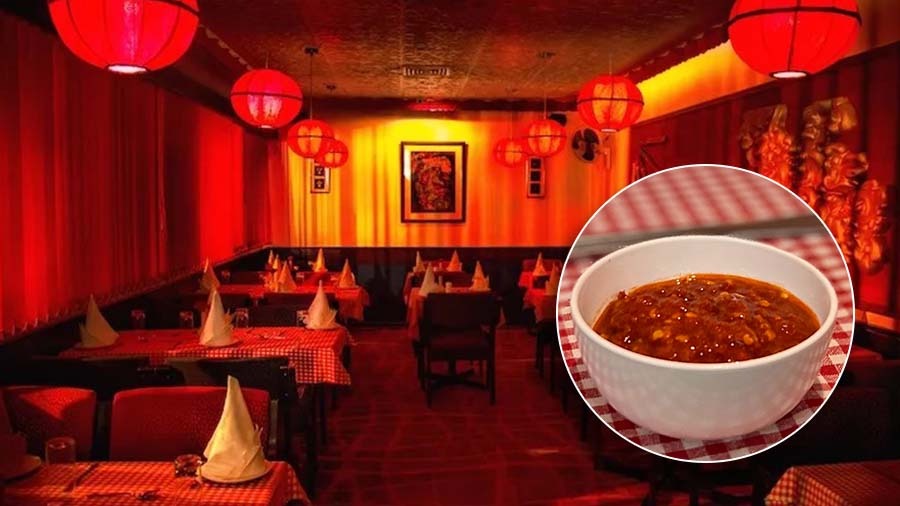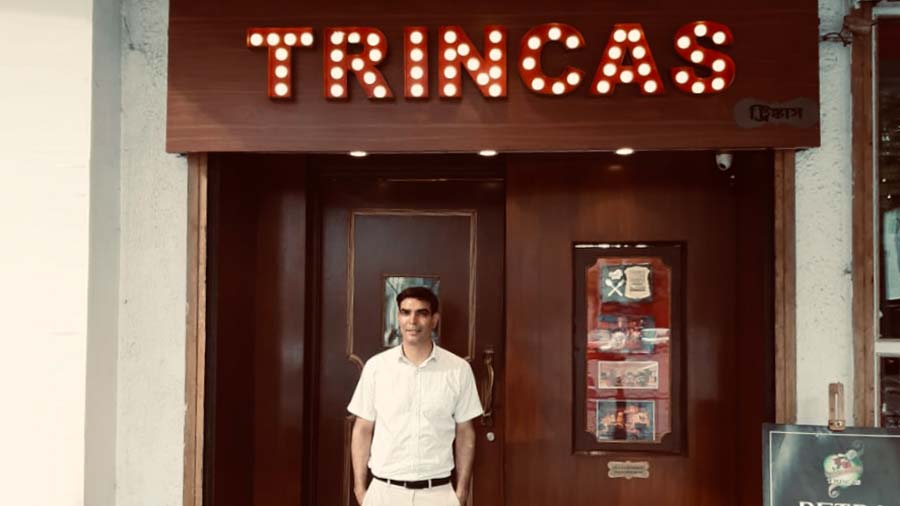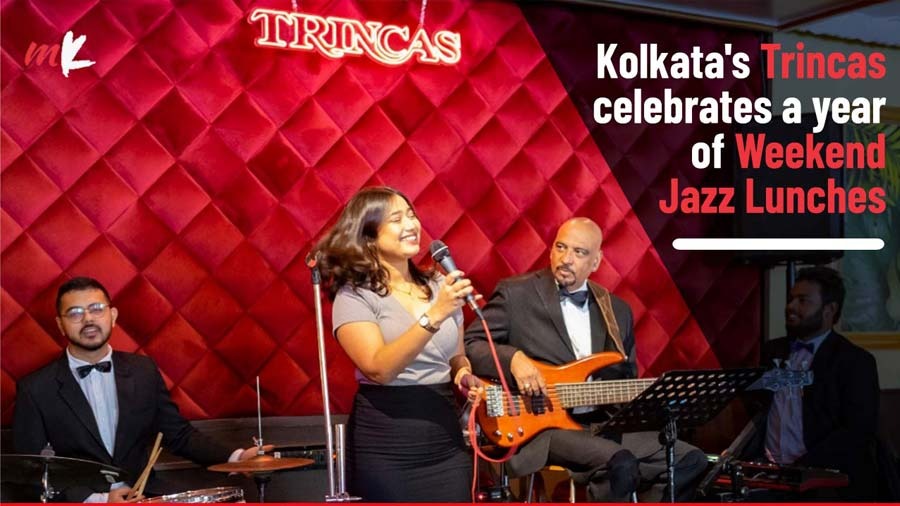It’s the sweltering summer of 1984 in Kolkata. The specialty burners in Trincas’ kitchen are on high-flame and two cast-iron woks shimmy-like mirages over twin fires of blue and orange. In one pan, a frenzy of noodles, red with chilli paste, leap in the air and are caught dexterously back before being sprinkled generously with bright green chives. In another, slivers of meat sizzle with oil, red chillies, garlic and spring onions.
Both cooks have been on their feet for hours, cutting, chopping, preparing for the evening rush. Now, the Chilli Garlic Noodles and the Lamb in Hot Garlic sauce, both fiery red and steaming hot, sit next to a plate of Egg Fried Rice. The loaded tray is being whisked away, out of the kitchen, through the air-conditioned hall of Trincas, past the band in full swing, and into the restaurant’s newest specialty section — Ming Room!
As the glass door to Ming closes behind the server, Linda’s gorgeous voice and Noel’s bass guitar (mainstays of the band in the 1980s) take on a muted muffle. The clamour of a busy restaurant — clinking cutlery, laughter and happy conversation takes the place of the music. A family sits at the third table on the left — it’s their fifth consecutive visit in as many weeks. By now, the steward knows their order — Drums of Heaven to start with, because it’s the little girl’s favourite, and then the rest.

The Original Drums of Heaven is the most popular Ming Room order. Eat it with Hot Garlic Dipping Sauce or for more firepower, with Ming ’83 Chilli Paste Trincas
Rukshana discards the last of the drumsticks. She can’t decide which she loves more: the thick, crunchy, deep-fried batter coating the outside or the soft, steaming chicken on the inside! She’ll remember these joyous meals around this table 40 years later. In 2022, she’ll wonder how the food still tastes the way it did back in the 1980s. The secret, as they say, is always in the sauce!
Ming Room: A spicy revolution
Ming Room was the first Sichuan-inspired restaurant to open in Kolkata in 1983. It started a food revolution of sorts: the ‘spicy-fication' of what we now know as “Calcutta-Chinese”. A special chilli paste formed the main theme and key ingredient in a number of dishes. Made of garlic and chillies, Ming Room’s secret sauce was, and still is, in one word — spectacular!
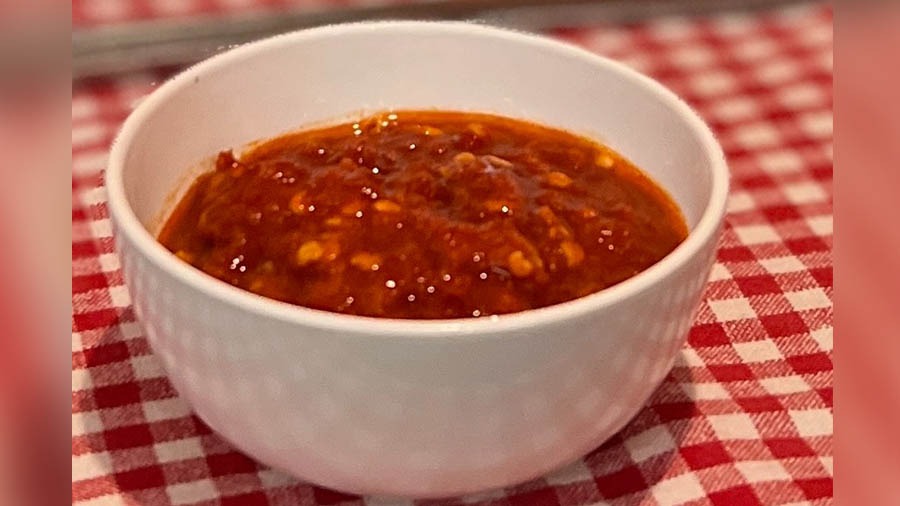
Made of garlic and chillies, Ming Room’s secret sauce (renamed Ming’83) is stuff of legends Trincas
Before the Ming phenomenon, Cantonese and Hakka influences dominated commercial Chinese cuisine in Kolkata. It was a cuisine that spelt exotic – something for the brave and adventurous. To give context, most Kolkatans had never seen a noodle before they were introduced to Chinese food!
The Chinese community of Kolkata formed a unique weave in the city’s multicultural fabric and was responsible for not one, but two Chinatowns – both with their fan-favourite eateries.
In and around Tiretti Bazaar: the original Chinatown birthed glamorous Nan King in the 1920s with its violins and exquisite furnishings; homely Eau Chew made its coal-smoking Chimney Soup famous; and enterprising housewives sold steamed buns and fish-ball soup “Chinese Breakfast” on crowded pavements. Tiretti Bazaar and its surroundings ran the gamut from posh to humble.

Tiretti Bazaar — the original Chinatown TT archives
The new Chinatown – Tangra – centred around the Chinese-run tanneries built over the Eastern Wetlands of Kolkata. Tangra, with its strong Hakka influence, was just starting to step into the culinary limelight in the early 1980s. Kafulok and Kim Fa were home-dining experiences that were particularly popular. A meal would consist of Hakka Noodles and Cantonese Chicken served simply in an outer room of the family’s home.
Around the city, Waldorf on Park Street; Embassy and New Cathay on Chowringhee; Chung Wah and Song-Hai on Central Avenue; and Jimmy’s Kitchen on Lower Circular Road formed Kolkata's main favourites from the 1960s onwards.
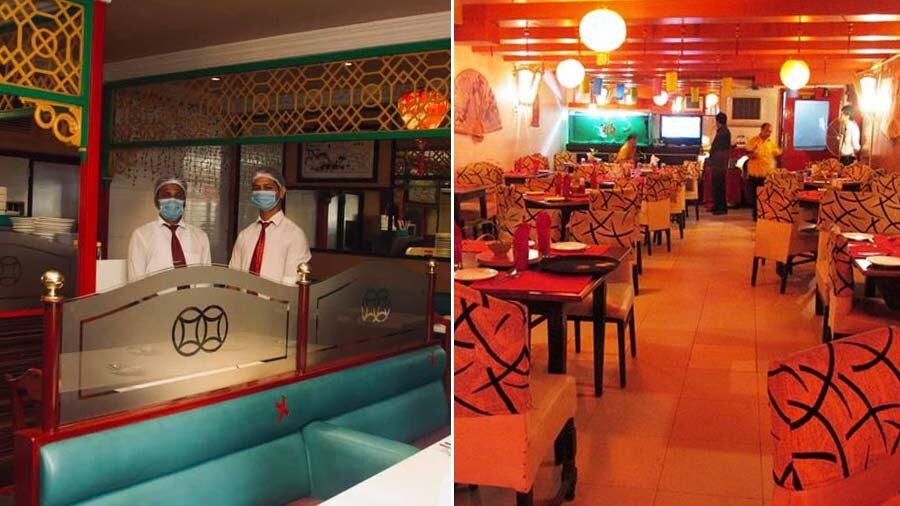
(Left) Jimmy’s Kitchen on Lower Circular Road and (right) Waldorf on Park Street were among the restaurants that formed Kolkata's main favourites, from the 1960s onwards Jimmy's Kitchen; TripAdvisor
The Sichuan influence
All these eateries served tasty, solid food. But the furthest an adventure in firepower would go, would be the addition of green chillies to vinegary sauces or to stir-fried “chilli chicken”. No one really served seriously spicy, over-the-top flavours. Not just yet…
The Sichuan influence arrived in Kolkata in 1983 with the opening of Ming Room by Trincas. Known for cooking with heat and with flavours exploding in every bite, Sichuan food hit all the right notes for Indians. Families flocked to Ming and there were queues almost every evening.
Newer restaurants followed the trailblazer in the 1980s continuing the hot new trend. One in Bangalore even stole all the cooks from Ming Room (hence only two cooks at the start of this story)!
Culinary waves in the 1990s introduced “exotic” vegetables and the likes of babycorn, broccoli and zucchini mushroomed on ingredient lists at Chinese restaurants like Chinoiserie and Red Hot Chilli Pepper.
In the 2020s, dimsums and baos have become the big grab.
Also in the 2020s, “Szechwan” “Schezwan” or “Sichuan” flavours can be found in everything from dosas to chips and bhel.
Trends appear, spiral and sometimes become the norm. It’s always interesting to track the history of a phenomenon.
Ming Room too, built on the trend begun by Kolkata’s earlier Chinese restaurants and drew inspiration from Sichuan food first introduced to India via Delhi and Bombay. Today, the restaurant serves a mix of heritage recipes, well-known favourites, and fresh flavours (think Sichuan-peppercorn stir-fries with crunchy peanuts). Ming’s special sauce (renamed Ming’83) still forms the base chilli for all dishes that require a spicy touch. This addictive chilli paste is always close at hand and available on request. Fair warning though, it’s deliciously hot. Dragons have been known to be made of lesser stuff!
Pssst: It might surprise you to know, that of the two cooks who started this story (after the Bangalore restaurant stole the rest of the team), one only recently retired in 2022, while the other is currently the senior-most partner at Trincas(!)
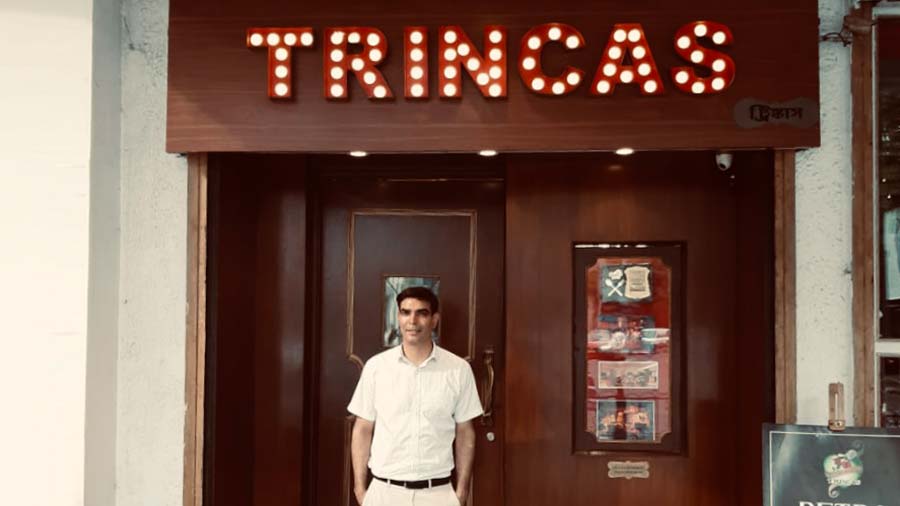
Anand Puri, the third-generation owner of Trincas
This story was first published as part of the Trincas Timeline Project — an exciting community-based memory project run by Anand Puri, the third-generation owner of Trincas who aims at collecting stories, photos, and anecdotes going back almost a hundred years. Trincas Timeline Project aims to cover not just Trincas’ storied history, but also provide glimpses of ‘the Park Street Scene’ and Calcutta/Kolkata as it has evolved over the last century.
